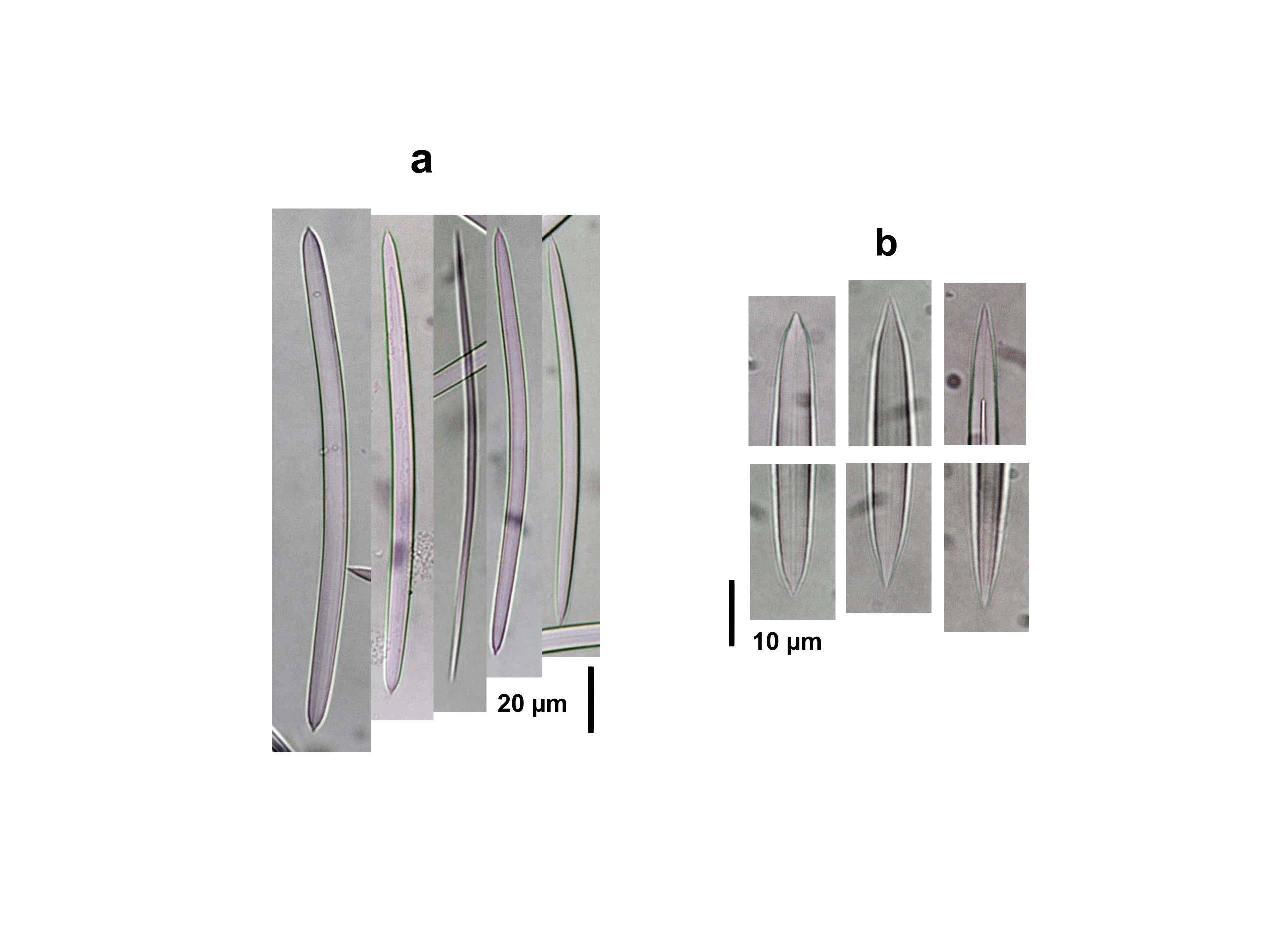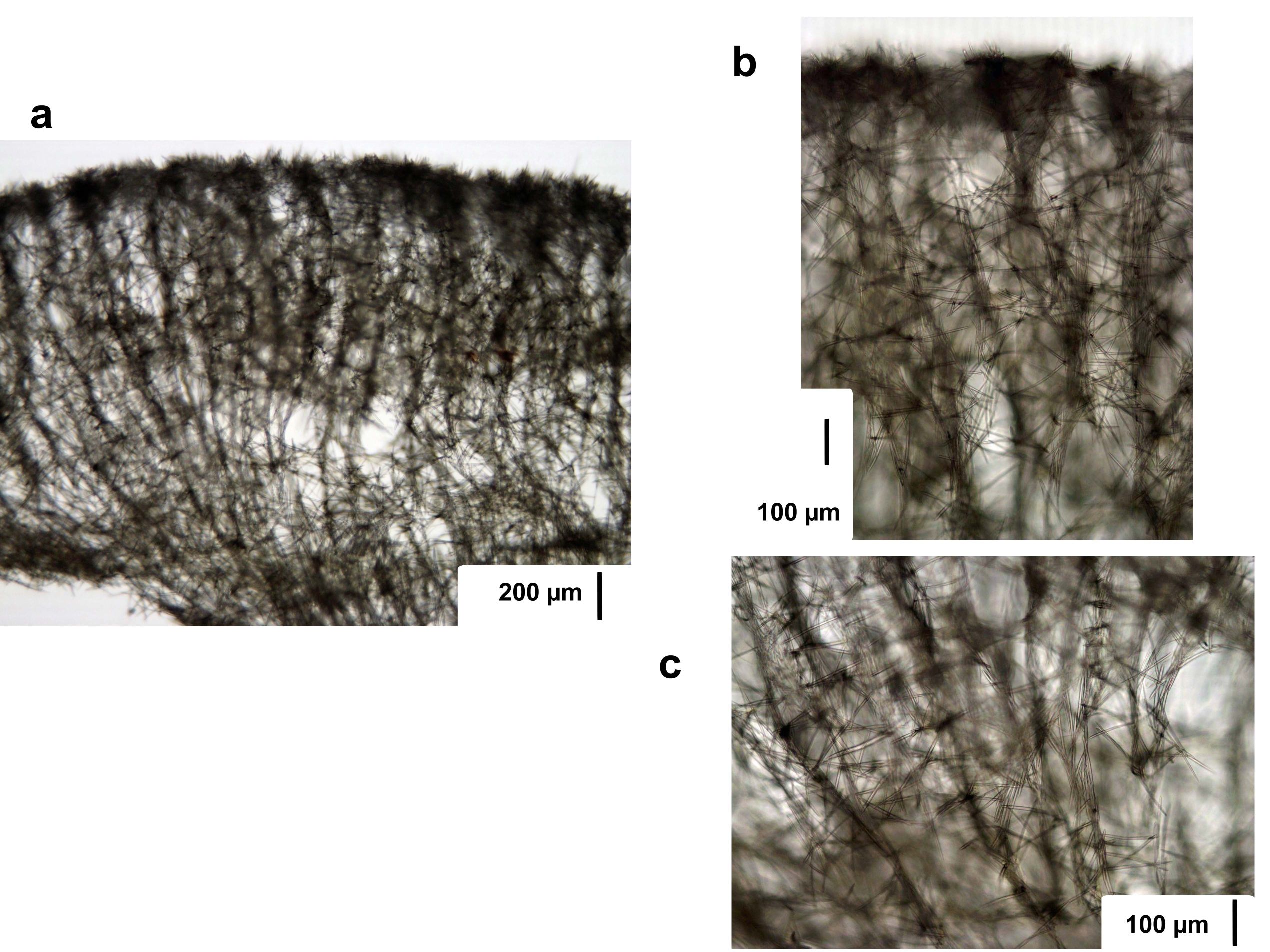the Sponge Guide - www.spongeguide.org
Observed Characteristics:
yellow
purple-violet
cinnamon-tan
encrusting
lobate
soft
Colombia
Panama
Puerto Rico
Species Description and Notes
Description: Thin to thick encrustations, up to about 1 cm in thickness, covering several tens of cm of the substratum, which is often dead coral. The color can be burnt yellow to cinnamon-tan with purple tinges, or completely purplish brown, with the interior cream. The surface can be even or bumpy, with a network of slightly depressed veins which are subsurface canals, either converging in oscules or forming an irregular network. Oscules are dispersed, even or on top of mounds, up to about 4-5 mm in diameter, often with a membranous collar. Consistency is crumbly, easily tattered when handled. The skeleton is an anisotropic reticulation of irregularly ascending and diverging spicule tracts, 2-10 or more spicules in cross-section, 10-50 µm thick, separated some 50-130 µm, irregularly interconnected by single spicules or by spicule fascicles (sheets). Tracts end at the surface as spicule brushes; these, together with paratangentially placed, interconnecting spicules form a dense, confused ectosome, some 300-400 µm thick. Spicules are hastate oxea, stout, slightly curved, with thinner developmental stages, and ends short, acute, concave-conical, often slightly telescopic, 107-175 µm long by 2-7.5 µm thick (only measured in a Panamanian specimen).
Notes: This species inhabits shallow to deep reefs, living exposed, often covering dead foliose or massive corals. We have placed it under Neopetrosia with some hesitation, as most other species of this genus are harder. Its spicules and their size, and the skeleton, fall within some of the species of this genus with which we are familiar. It may be initially confused in the field with N. proxima (Duchassaing & Michelotti, 1864), also pictured here, but can be distinguished by the softer texture and the lattice of canals visible at the surface. I may also be confused in the field with Svenzea cristinae Alvarez, van Soest & Rützler, 2002, also pictured here, which is also thickly encrusting and soft, yellow to vinaceous, but has longer styles instead of oxea as spicules.
Tissue and Spicule Images

Spicule Images: a) Oxeas; b) ends of spicules. Sample from Bocas del Toro, Panama.
Source Specimen: http://www.spongeguide.org/ thumbs/00117/02038.JPG

Tissue Images: a) Perpendicular section (surface above); b) enlargement at the surface; c) view of the choanosome. Sample from Bocas del Toro, Panama.
Source Specimen: http://www.spongeguide.org/ thumbs/00117/02038.JPG
Images
Neopetrosia sp.-"soft"
Location: Panama, Bocas del Toro
Photographer: Sven Zea
Location: Panama, Bocas del Toro
Photographer: Sven Zea
Location: Panama, Bocas del Toro
Photographer: Sven Zea
![<i>Neopetrosia </i> sp.-"soft" <br />[Puerto Rico, La Parguera]](thumbs/00117/02039.jpg)
Location: Puerto Rico, La Parguera
Photographer: Sven Zea
![<i>Neopetrosia </i> sp.-"soft" <br />[Colombia, San Andrés Archipelago, Serrana Bank (atoll)]](thumbs/00117/02040.jpg)
Location: Colombia, San Andrés Archipelago, Serrana Bank (atoll)
Photographer: Sven Zea